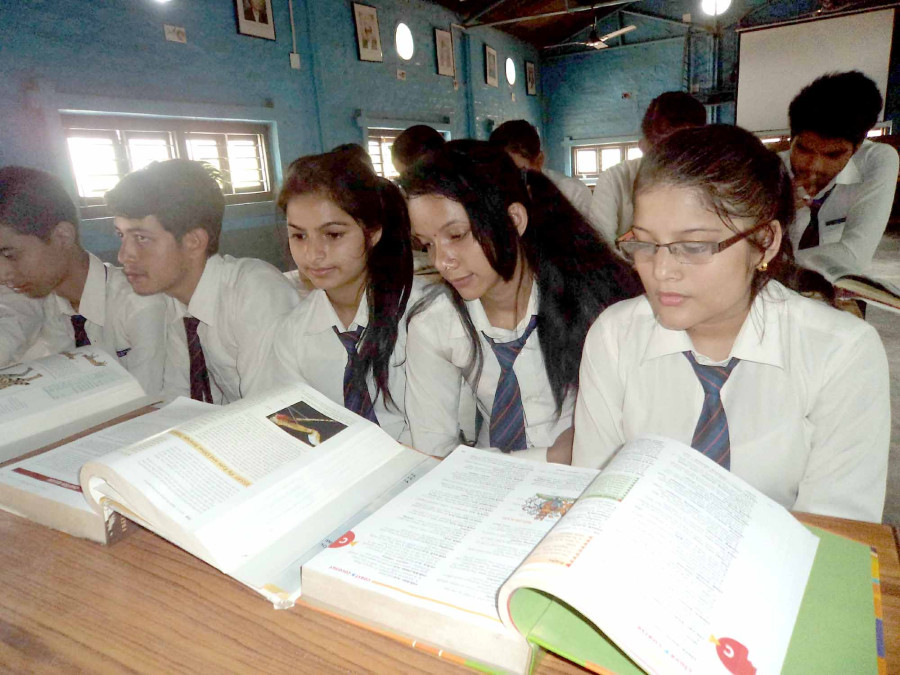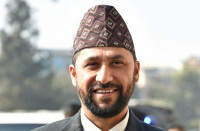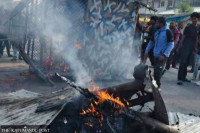National
Confusion in local governments threatens to derail federal government’s total literacy plan
Singha Durbar aims to achieve total literacy in the country by July 2021.
Binod Ghimire
The government has decided to make Nepal a fully literate country by the end of next fiscal year. Presenting the government’s policies and programmes before the federal parliament in May, President Bidya Devi Bhandari announced that illiteracy would be eliminated from the country within two years, adopting the literacy drive.
Primarily, the local governments conduct literacy classes through the community learning centres that have been established in almost every ward. However, the local representatives are not clear over their roles in the government’s ambitious plan.
Shova Sapkota, ward-18 chairperson in Kathmandu Metropolitan City, said she is confused as to whether the federal government or the local government would be conducting the literacy programme. She said the representatives in the metropolis are unaware of their roles in the total literacy mission.
“There is a coordination gap between the federal and local governments. There should be some prompt measures in place to end the confusion,” said Sapkota. Eliminating illiteracy has been the goal of successive governments since the fiscal year 2008-09. However, the country hasn’t attained that target even after spending more than Rs11 billion in the name of literacy in one decade.
In the fiscal year 2008-09, the ambitious National Literacy Campaign was announced, allocating Rs1.04 billion to a programme that pledged zero illiteracy in two years. The government allocated a similar amount the following year. However, the total literacy target was not met.
The government in the fiscal year 2012-13 conducted a door-to-door survey to find out the exact number of illiterates in the country under its Literate Nepal Campaign the same year. The campaign aimed to make 4,054,649 adults—the number of illiterates according to the survey—able to read and write by the end of the fiscal year 2015-16. A total of Rs 2.68 billion was allocated over three years. The targets were not met even after a second attempt.
At the beginning of the current fiscal year, the government made a similar announcement—to make the country fully literate within two years.
Local government officials say the presence of the federal government’s subordinate office at the local level has added to the confusion. While the constitution provides the local governments full authority on education, the Education Ministry has established education units in every district to represent the federal government. “There is duplication of jurisdiction between the local government and the education units,” said Nava Raj Rijal, education officer at the Lalitpur Metropolitan City.
The Education Ministry so far has announced 51 districts as total literate and plans to add another 19 this year. As many as 26 districts including Kathmandu and Mahottari, the home district of Education Minister Giriraj Mani Pokharel, are yet to be announced as totally literate districts.
Officials at the Centre for Education and Human Resource Development said they want the local governments to take the lead while the federal government will provide the needed help for the drive. “The centre will only facilitate the local governments,” said Geha Nath Gautam, director at the centre.
“Now the announcement should start from the wards and gradually move upward,” said Mahashram Sharma, former education secretary who has expertise on non-formal education.
He also said the focus should be on providing adequate support for the community learning centres so that they can turn into centres for lifelong learning after the country is declared “total literate”.




 7.12°C Kathmandu
7.12°C Kathmandu













%20(1).jpg&w=300&height=200)

